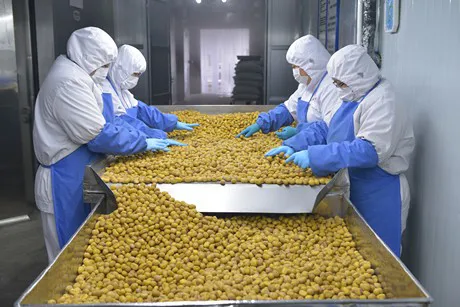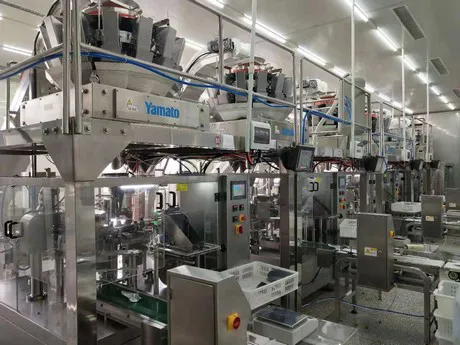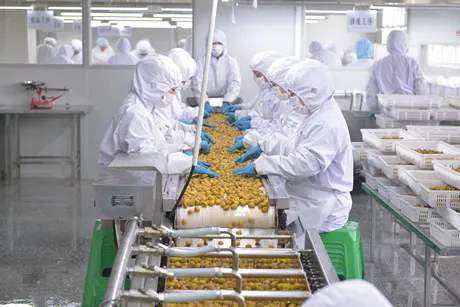"The surface area devoted to Chinese chestnut plantations expanded in many production areas in recent years. Beijing, Hebei, and Shandong are good examples of this development. The overall surface area devoted to chestnut plantation in these areas expanded by around 5% per year. However, the overall production volume of chestnuts this year decreased by around 40% in comparison with last year. The main reason for this development is poor weather. The chestnut trees bore less fruit than usual." This is according to manager Yue, a holder of the frozen chestnut trademark.

"The harvest of Chinese chestnuts begins every year around September. Every large dealer, processing factory, and roasted chestnut shop starts to purchase chestnuts in September. They store the purchased chestnuts in refrigerated warehouses. The products commonly survive storage until September in the subsequent year. However, the major dealers and processing factories usually complete the retail or processing of their chestnuts by April in the subsequent year. The reason for this is that chestnuts stored through summer lose their sweetness and flavor, and they do not look as appetizing. In general, the overall sales volume of Chinese chestnuts grows every year. The production volume generally averages a 10% growth per year, and sales are not difficult at all."

"Fresh Chinese chestnuts sell for around 24 yuan [3.49 USD] per 0.5 kg along the coast and in south China. In the interior cities they sell for around 18 yuan [2.62 USD] per 0.5 kg. The price of Chinese chestnuts in third-and fourth-tier cities is around 15 yuan [2.18 USD] per 0.5 kg."
Manager Yue further explained, "we see that the export market for Chinese chestnut products is steadily growing. The export to Southeast Asia and North Asia in particular rapidly expands. The export price is around 36 yuan [5.23 USD] per 0.5 kg. The overall export volume in Japan declines. The fresh chestnuts destined for export are usually packaged in double jute bags. The bags exported to Japan weigh 80 kg, while the bags exported to Korea and Thailand weigh 40 kg. We also export 1-2 kg bags to the Middle East. Chinese chestnuts are not high-end products in foreign markets. Since the price levels in different countries vary, the prices of Chinese chestnuts in different foreign markets can be quite diverse. Sweet roasted chestnuts sell for around 50 yuan [7.27 USD] per 0.5 kg in the USA or Japan, but only 25 yuan [3.63 USD] per 0.5 kg in Thailand."

"Our company sells chestnuts in the domestic market and abroad. In the domestic market we mainly sell sweet chestnuts to processing factories. We sell in 30 regions across China, but most of our sales take place in the better-developed areas and along the coast. We sell Chinese chestnuts in chain-stores, specialized stores, and a small volume in supermarkets. We also sell chestnuts online, but online sales only account for a small percentage of our overall sales and can not be compared to traditional retail channels."

"The overall competition in the Chinese chestnut industry is fierce. Most companies lower the price to increase the sales volume. This is not ideal for suppliers and this situation raises the requirements for producers. The quality of the Chinese chestnuts we sell to our customers depends on the production area where we purchase the chestnuts. We set a rational price based on a careful consideration of all factors. Furthermore, we closely control and guarantee high product quality at every step of the process from plantation, purchase, and storage to retail.
This is particularly important during storage. We use specialized equipment to circulate cold air and control the humidity in our warehouses. We work hard to obtain the optimum levels of sugar and starch in our chestnuts, and deliver a Chinese chestnut that is perfectly fragrant, sweet, and glutinous. Our plantation and retail method was awarded a distinction for excellence by the Japanese "AEON Guild". This greatly strengthened our competitive position in the export market."
Contact person: Manager Yue
Company name: Qinghuangdao Yanshan Chestnut Co., Ltd.
Telephone number: +86 18233599980
Company website: www.qhd-chestnut.cn
